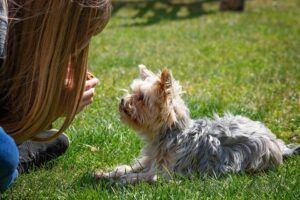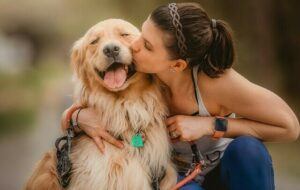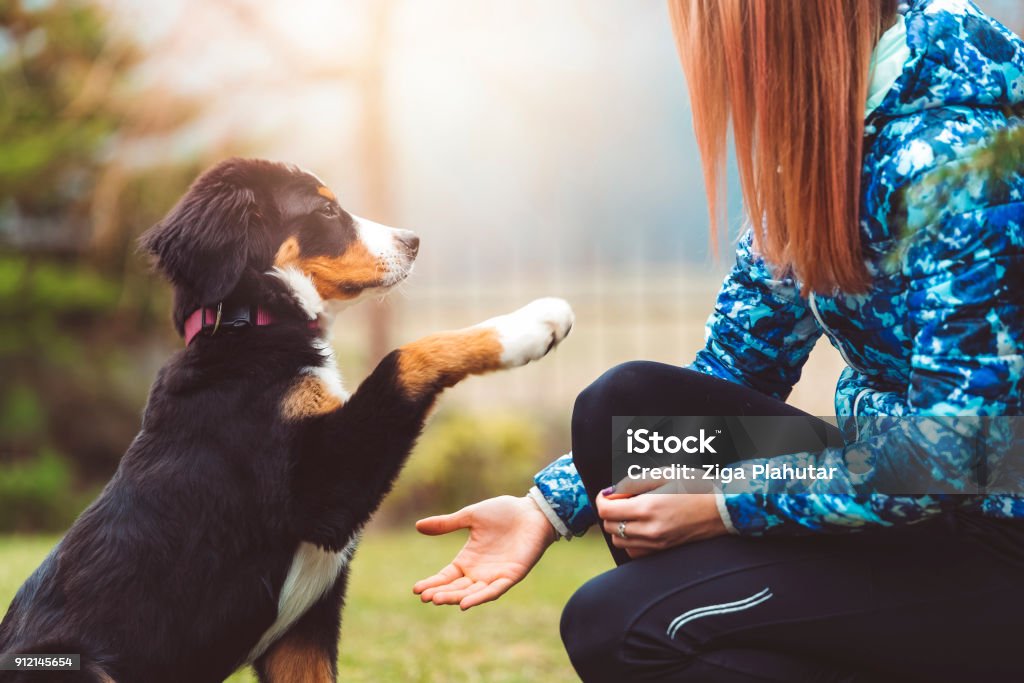If you’re new to the world of dog training, you might wonder what a small plastic device called a clicker can do for you and your furry friend. Simply put, a dog training clicker is a tool that makes a distinct sound, a ‘click,’ to mark a desired behavior at the exact moment it happens.
Clicker training is rooted in the science of conditioning, where dogs learn to associate the click with a positive outcome, typically a treat. This method is remarkably effective because it provides immediate feedback to dogs, which is essential for effective communication between you and your pet.
 Introducing your dog to a clicker starts with making the ‘click’ a positive experience. Every click is followed by a treat, creating a positive association. Initially, clicking without commands can help your dog understand that the clicker is a good thing.
Introducing your dog to a clicker starts with making the ‘click’ a positive experience. Every click is followed by a treat, creating a positive association. Initially, clicking without commands can help your dog understand that the clicker is a good thing.
One of the main advantages of a clicker is its consistency. The sound of a clicker doesn’t change, it’s not influenced by your mood or tone, making it a reliable way for your dog to understand they’ve done something right.
Before we dig deeper, let’s tackle some of the skepticism. A common misconception is that clicker training is a fad or too simplistic to work on complex behaviors. On the contrary, when used correctly, the clicker is a powerful addition to your training toolkit, capable of facilitating advanced learning and strengthening the bond between you and your dog.
With the basic understanding in place, it’s time to move forward. The next section will walk you through mastering the techniques that turn simple clicks into an elaborate language of training cues.
Mastering Clicker Training Techniques: Tips and Tricks for Success
Effective dog training hinges on consistency, patience, and the right techniques. Clicker training is no exception. I’ll share some key tips that have worked wonders for dog owners. First, make sure you have a clicker and your dog’s favorite treats at the ready.
The cornerstone of clicker training is precise timing. When your dog performs the desired action, IMMEDIATELY click and follow with a treat. This instant feedback tells them they’ve done something right, which is crucial for their learning process.
Start with straightforward commands like ‘sit’ or ‘stay.’ Each time your dog succeeds, click and reward. Consistency here is vital; always click for the same behavior and follow with a reward. This builds a solid association between the click, the action, and the positive outcome.
Now, once your dog has the hang of the basics, it’s time to up the ante. Incorporate more complex commands such as ‘roll over’ or ‘play dead.’ Gradually increase the difficulty of the tasks as your dog learns, ensuring not to rush the process.
Even the most well-intentioned dog owners may face challenges with clicker training. If your dog isn’t responding as expected, take a step back. Assess the situation. Are the commands too complicated? Are you clicking at the right moment? Don’t be hesitant to revisit simpler tasks to reinforce the learning.
Remember, the goal is to eventually wean your dog off the clicker. Continue reinforcing learned behavior with occasional treats, but start to introduce verbal praise or a gentle pat as additional rewards. This will help maintain their training without the need for a clicker at every step.
Beyond the Click: Ensuring a Happy, Well-Behaved Canine Companion
The sound of a clicker in dog training isn’t the end goal; it’s merely a stepping stone to clear, reliable communication between you and your dog. Even after mastering clicker training, the journey to a well-behaved companion continues.
Transitioning away from a clicker is a process. Start by gradually introducing verbal commands or hand signals alongside the click. Over time, reduce the frequency of clicks, allowing your pet to rely more on the new cues.
signals alongside the click. Over time, reduce the frequency of clicks, allowing your pet to rely more on the new cues.
One common concern is that behavior may regress once the clicker is out of the picture. To avoid this, ensure your pet has fully internalized each command before moving on. Consistency is crucial; always reward the behavior you want to see.
Clicker training isn’t exclusive. You can and should combine it with other forms of positive reinforcement. Treats, praises, and play can all form part of an effective and varied training regimen. Such variety keeps your dog engaged and eager to learn.
Above all, remember that training is an ongoing process. It crafts not just behaviors but a bond between you and your pet. It’s built on patience, understanding, and consistent reinforcement. With these pillars, you’ll enjoy the companionship of a happy, well-behaved canine friend.

